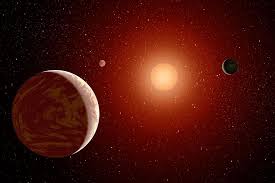
Introduction
Red dwarf stars are the most abundant type of stars in the universe, making up about 70-80% of all stars. These stars are smaller and cooler than our Sun, yet they play a crucial role in the cosmos. Understanding red dwarfs is essential for astronomers as they can influence the formation of planetary systems and potentially host life.
Characteristics of Red Dwarf Stars
Red dwarfs are classified as M-type stars, with a surface temperature less than 3,500 degrees Celsius (6,332 degrees Fahrenheit). Due to their lower mass and temperature, these stars emit significantly less luminosity than larger stars, which allows them to exist for billions of years. Some red dwarfs have been theorised to live for trillions of years, making them some of the longest-living stars in the universe.
Recent Discoveries and Research
Recent advancements in astronomy have led to significant discoveries concerning red dwarfs. For example, the discovery of the nearest known star system, Proxima Centauri, a red dwarf, has provided valuable insights into the potential for extraterrestrial life. In 2020, researchers announced the detection of a potentially habitable exoplanet, Proxima Centauri b, which orbits this star. Furthermore, studies have shown that many red dwarfs possess potentially habitable planets in the habitable zone, making them prime candidates for life.
Future Implications
The study of red dwarf stars is vital for understanding the broader universe. As research continues, astronomers may uncover more exoplanets within their habitable zones, raising questions about the potential for life beyond Earth. Additionally, the investigation into the structures and atmospheres of red dwarf stars could enhance our knowledge of stellar evolution and the dynamics of galaxies.
Conclusion
Red dwarfs are significant not only for their abundance but also for their potential to host planets that may sustain life. As telescopes and observational technology improve, red dwarfs will continue to be a focal point in the search for extraterrestrial life and our understanding of stellar phenomena. Their longevity and stability make them fascinating subjects for ongoing research in the field of astronomy, with implications that could reshape our understanding of the universe.
You may also like

Understanding When is the Shortest Day of the Year

The NASA Predictions for the Longest Solar Eclipse
